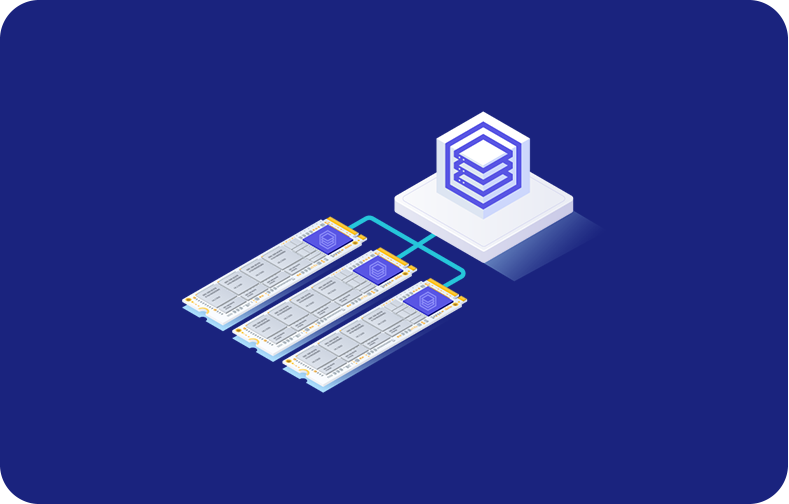What is MongoDB? All You Need To Know

Have you ever wondered how modern apps manage lots of data so smoothly? The secret is often in their choice of database, and one standout is MongoDB.
This database is a favorite among developers for its ease of use and powerful features. MongoDB changes the way teams handle data. But what sets it apart? We'll explore that ahead in the article so stay tuned.
MongoDB stands out by organizing data into documents rather than the conventional rows and columns. This document-centric approach allows for a more intuitive and flexible data storage system. Perfect for managing a myriad of data types from multiple sources, MongoDB adapts effortlessly, scaling from the smallest blog to the largest e-commerce platform with ease.
Ready to see how it can help you handle your data challenges?
Let's dive right in.
What is MongoDB?
MongoDB is an open-source, NoSQL database that diverges from traditional SQL-based data organization. It excels at managing vast data volumes distributed across numerous locations, making it a robust choice for expansive data handling needs.
MongoDB works well with data that comes in many forms because it organizes data into documents and collections instead of the usual tables and rows found in traditional databases.

Unlike SQL databases that require data to fit into a strict structure of tables and columns, MongoDB uses collections and documents. A document, which holds individual data records, consists of key-value pairs—the basic unit of data in MongoDB. Collections are like folders that hold many documents. This setup makes it flexible to use and adapt.
This database is popular because it can store vast amounts of information and still run quickly. It's packed with features like searching data in various ways, indexing for faster access, balancing loads to manage traffic, and allowing data operations on the server-side. Plus, it can handle complex data combinations and operations with ease.
MongoDB offers versatile developer support by being compatible with numerous programming languages, including C, C++, C#, Go, Java, Python, Ruby, and Swift. This wide-ranging support makes it a highly adaptable tool for developers across the globe.
How does MongoDB work?
MongoDB operates in a way that's distinct from traditional relational databases. Here’s a clearer explanation of how it works:
-
MongoDB Server: When you use MongoDB, it starts with setting up a server. This server allows you to create and manage your databases.
-
Databases and Collections: Within each MongoDB community server, you can create multiple databases. Each database can hold multiple collections, which are similar to tables in a traditional database.
-
Documents and Fields: The data in MongoDB is stored in documents instead of rows. Each MongoDB document is made up of field-value pairs, similar to columns in a relational database. Documents are very flexible because you can add new fields or remove existing ones anytime.
-
BSON Format: BSON lets MongoDB store more complex data in documents like arrays, sub-documents, and even arrays of documents, enhancing the data types you can use beyond what JSON supports.
-
MongoDB Shell: MongoDB includes an interactive JavaScript interface called the MongoDB shell. This tool connects to your MongoDB instances, letting you perform data queries, updates, and administrative tasks directly.
-
Data Distribution and Scalability: MongoDB supports automatic sharding, which distributes data across multiple machines. This is useful for handling large databases by spreading the load, improving performance, and ensuring scalability as data volume grows.
-
Data Consistency and Replication: MongoDB runs on a clear setup where one server takes the lead on all data entries, keeping everything consistent. But it doesn’t stop there—it also has a team of secondary servers that back up the data as it comes in. This arrangement means even if the main server takes a sudden nap, the data isn't just hanging in the air.

This framework not only makes MongoDB highly flexible and scalable but also ensures that it can handle large and complex data sets efficiently, which is crucial for modern applications dealing with vast amounts of data.
Why is MongoDB used?
There are multiple reason why businesses should be using MongoDB. These include:
Storage
MongoDB handles huge volumes of structured and unstructured data. It stores this data in documents, which are more flexible than traditional rows and columns. Additionally, MongoDB can scale effortlessly. It can power up by beefing up an existing server, or broaden out by linking more servers to manage increased data demands.
The use of indexes significantly enhances search performance across MongoDB’s databases. Indexes can be applied to any document field, including those within nested documents and arrays, facilitating rapid and efficient data queries.
Data integration
MongoDB is particularly adept at integrating data across various applications, making it an excellent choice for complex environments that include hybrid and multi-cloud deployments.
Its document-oriented structure aligns well with the data needs of modern, distributed applications, ensuring seamless data integration and manipulation across different platforms.
The aggregation capabilities of MongoDB enhance this further by enabling complex data transformations and analytics to be performed directly within the database. This reduces the need for additional processing layers and simplifies the architecture required for handling diverse data streams, which is particularly beneficial for real-time data processing and analytics.
Complex data structures descriptions
The document database model of MongoDB allows for intuitive storage and manipulation of nested data structures. Documents can embed other documents or arrays, offering a natural and efficient way to represent complex and hierarchical data.
This model is incredibly flexible, accommodating variations in data structures without requiring a predefined schema. It's ideal for applications that need to store data with varied attributes or rapidly evolving data models. This flexibility ensures that MongoDB can support a wide range of application requirements, from simple data logging to complex, dynamic data environments.
Load balancing
MongoDB’s architecture is built to run azcross multiple servers, effectively distributing database loads to enhance performance and ensure reliability.
This distribution is managed through sharding, where data is partitioned across multiple servers, allowing simultaneous data operations that increase throughput and reduce load on any single server.
Such a configuration also provides redundancy and high availability, minimizing downtime and ensuring continuous operation even when some of the servers are compromised or undergoing maintenance. This capability makes MongoDB particularly useful for high-load applications, such as large web services or data-intensive real-time applications.

Types of MongoDB Platforms
The different MongoDB platforms include:
-
MongoDB Community Edition: The open source version that provides the core functionality of MongoDB. You can install MongoDB community edition through here.
-
MongoDB Enterprise Server: This commercial edition enhances MongoDB with advanced security features. It also provides an in-memory storage engine for quicker data access, along with improved administrative tools, authentication options, and monitoring capabilities through Ops Manager.
-
MongoDB Compass: This graphical user interface (GUI) simplifies database interaction. Users can manage document structures, execute queries, and index data efficiently with its user-friendly design.
-
MongoDB Atlas: It is a cloud database service of MongoDB. You can find it on AWS, Microsoft Azure, and Google Cloud Platform. This platform simplifies database administration and enhances scalability, all within a secure and scalable environment.

Features of MongoDB
MongoDB offers multiple features. The main ones are:
Replication
MongoDB achieves high availability with replica sets. These sets include a primary server for all write and read operations, and secondary replica servers that hold data copies. This setup ensures automatic failover to a secondary server if the primary fails. As a result, data availability continues without interruption.

Scalability
MongoDB enables both vertical and horizontal scaling. Vertical scaling involves enhancing the capacity of an existing server. Horizontal scaling, on the other hand, entails adding more servers to spread out the workload more efficiently.
Load balancing
The database manages load balancing automatically, utilizing its scalable architecture. This negates the need for a separate load balancer service, as MongoDB can distribute data and workload across multiple servers seamlessly.

Schema-less
MongoDB is schema-less, unlike traditional SQL databases that need predefined schemas to organize data. This flexibility lets MongoDB store data in documents made up of key-value pairs. The dynamic schema of MongoDB can easily adapt to changes in data structure.
Document
MongoDB stores data in documents, not in the usual rows and columns like SQL databases do. This document approach makes it more flexible and intuitive. It's easier to see and manage how data is related.
Advantages of MongoDB
Here are the key advantages of MongoDB:
Schema-less
MongoDB, a NoSQL database, offers exceptional flexibility as it does not require a fixed schema. This adaptability allows users to add numerous fields to a document as necessary. Such flexibility facilitates easier scaling compared to relational databases, which are constrained by stringent data structures.
Document-oriented
MongoDB server uses a document-oriented approach to store data, which naturally aligns with the object models in several programming languages. This method facilitates data handling and reduces the need for complex joins, often leading to performance improvements and cost reductions. Documents can also contain embedded documents and arrays, simplifying data aggregation and manipulation.
Scalability
MongoDB is built for high scalability, primarily through horizontal scaling via sharding. Sharding distributes data across a cluster of machines, allowing MongoDB to manage large data volumes efficiently and maintain performance across distributed environments. This feature makes it particularly suitable for big data applications.
Third-party support
The MongoDB database supports a variety of storage engines and offers a pluggable storage engine API, enabling third-party developers to create customized storage solutions tailored to specific user needs. This openness fosters a robust ecosystem around MongoDB.
Aggregation
MongoDB includes a collection of powerful aggregation tools that allow for complex data processing operations directly in the database. MongoDB also features GridFS, a file system for storing large files that exceed the default BSON document size limit of 16MB. This is comparable to the Hadoop Distributed File System and allows MongoDB to handle large data files directly.
Disadvantages of MongoDB
The disadvantages of MongoDB include:
Continuity
MongoDB uses an automatic failover mechanism within its replica set, where there is only one master (primary) node at any given time. In the event the primary replica node fails, another node in the set automatically takes over as the new primary. While this ensures continuity, the transition isn’t immediate and can take up to a minute to elect and switch to the new primary.
Write limits
The architecture of having a single master node in MongoDB also impacts write performance. All write operations must go through the master node, which can become a bottleneck, especially under heavy write loads. The capacity of the master node thus limits the overall write throughput of the system.
Data consistency
MongoDB does not enforce referential integrity typically seen in relational databases, as it lacks built-in support for foreign-key constraints. This absence can lead to issues with data consistency, particularly in complex, interconnected data scenarios where ensuring data integrity across multiple documents is crucial.
Security
Historically, MongoDB database did not enable user authentication by default, leading to instances of unsecured databases being exposed and targeted by hackers.
Although newer versions have been installed with improved default security settings to prevent unauthorized access to data directory, the initial setup without automatic security configurations can still pose a risk if not properly installed and managed by the database administrators.
Elevate Your MongoDB Server Deployment with VPSServer
Integrating and installing MongoDB server with a reliable and high-performance hosting solution from VPSServer can greatly enhance the effectiveness and efficiency of your MongoDB deployments.
VPSServer provides a robust environment with dedicated resources, which is crucial for maintaining the performance of MongoDB, particularly when handling large datasets or high-traffic applications.

Moreover, VPS Server’s global data centers offer low latency and high availability, which are essential for MongoDB applications requiring quick failover and minimal downtime.
This is especially important for maintaining continuity, as discussed with MongoDB’s failover mechanisms. The geographical spread of VPS Server can help in strategically placing your MongoDB instances closer to your user base, reducing response times and improving the user experience.
Ready to boost the performance, scalability, and security of your MongoDB database? Visit VPSServer today to explore how our VPS solutions can tailor to your specific MongoDB requirements.
Frequently Asked Questions
What is the difference between MongoDB and MySQL?
MongoDB and MySQL cater to different data management needs. MongoDB is cloud-friendly and handles both structured and unstructured data in JSON documents without requiring a predefined schema, ideal for rapidly evolving data. In contrast, MySQL emphasizes high data security, structured data in tables, and supports atomic transactions and joins, using SQL. This makes MySQL well-suited for applications needing complex queries and precise data integrity.
What are the potential use-cases of MongoDB?
MongoDB excels in handling flexible, diverse data across various use cases, including mobile applications, real-time analytics, content management systems, and enterprise data warehouses. Its dynamic BSON document format enables seamless data integration and rapid query responses, ideal for developing scalable mobile apps and performing complex analytics. This makes MongoDB particularly valuable for sectors needing robust, efficient data management and analysis capabilities.












